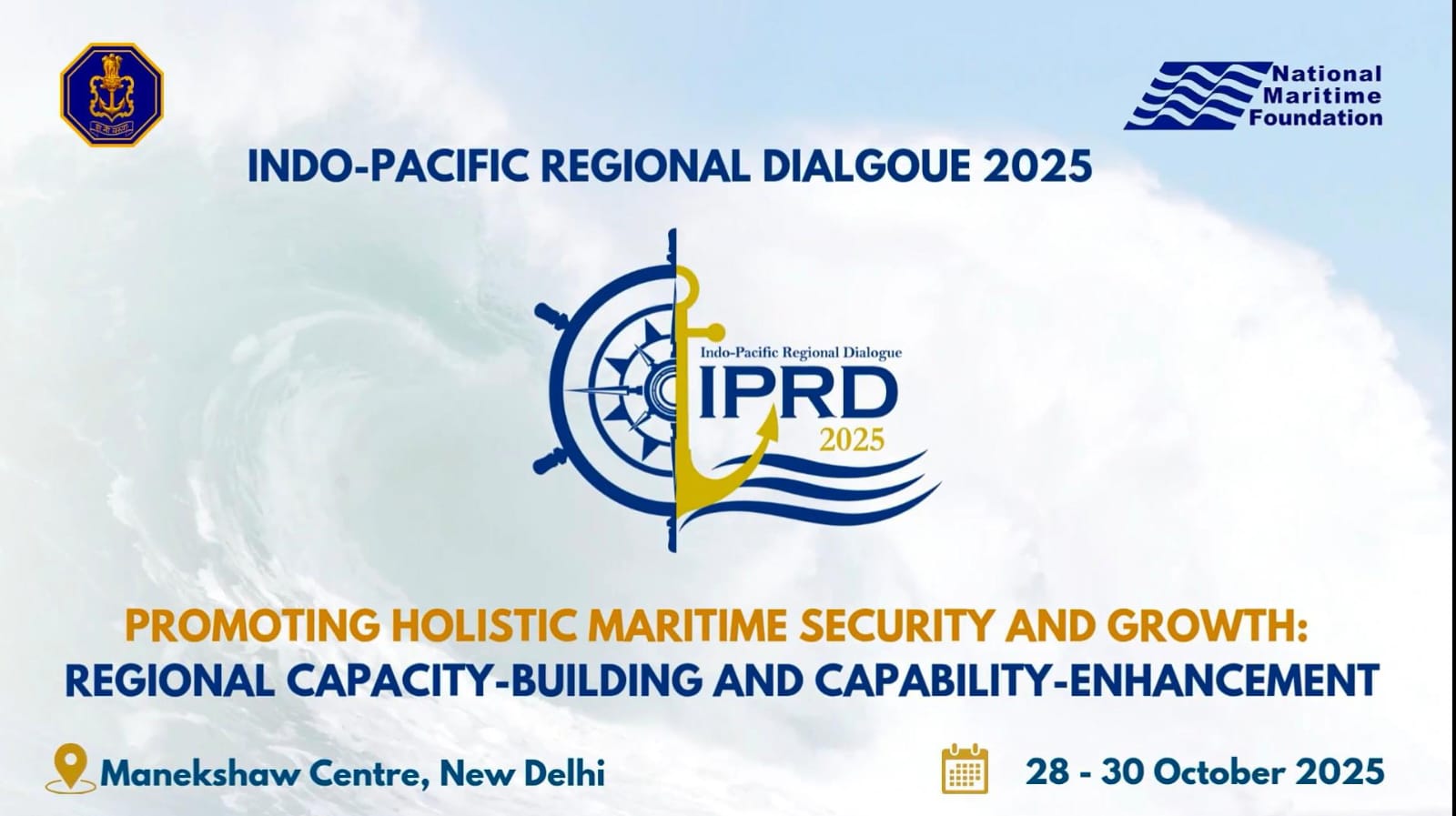The Indo-Pacific Regional Dialogue (IPRD) 2025, to be held in New Delhi from October 28 to 30, marks another step in India’s effort to consolidate its maritime diplomacy and strategic outreach across the world’s most contested waters. Hosted by the Indian Navy with the National Maritime Foundation as its knowledge partner, the conference is framed around the theme “Promoting Holistic Maritime Security and Growth: Regional Capacity-Building and Capability-Enhancement.”
At a time when maritime tensions, supply-chain fragility, and climate stress are reshaping the Indo-Pacific, India is seeking to turn its geographic advantage into strategic depth. The IPRD serves as the apex platform through which the Navy articulates this ambition. Rather than a military exercise, it is a political and conceptual forum that aligns India’s maritime vision with the broader “Indo-Pacific Oceans Initiative” (IPOI), launched by Prime Minister Narendra Modi at the 2019 East Asia Summit in Bangkok.
Defining India’s maritime order
The IPOI outlines seven interconnected “lines of thrust” that collectively map India’s regional agenda — from maritime security and resource management to blue economy development and disaster resilience. Partner countries lead different pillars: the United Kingdom with India on maritime security, France and Indonesia on marine resources, and Japan, India, and the United States on trade and connectivity, among others.
India’s approach is deliberately networked rather than hierarchical. The IPOI’s design mirrors the structure of the region itself — complex, interdependent, and increasingly shaped by coalitions rather than blocs. Each “spoke” of the initiative reinforces the others, whether through technology cooperation, ecological stewardship, or crisis management.
From concept to capacity
IPRD 2025 aims to translate these conceptual pillars into actionable frameworks. The focus on “capacity-building” and “capability-enhancement” highlights two dimensions of maritime power: material infrastructure and human skill. Discussions are expected to explore how regional navies, coast guards, and maritime institutions can better coordinate operations, share resources, and manage risks across the Indo-Pacific’s overlapping security and economic zones.
India’s maritime policy, encapsulated in the acronym MAHASAGAR — “Mutual and Holistic Advancement for Security and Growth Across Regions” — forms the intellectual core of this effort. It positions the Indo-Pacific not as a theatre of competition but as a “strategic geography” where cooperation can coexist with deterrence. Within this framework, India’s naval diplomacy seeks to bridge the conceptual, political, and operational layers of regional architecture — linking the Indian Ocean Naval Symposium (IONS) with the Western Pacific Naval Symposium (WPNS) and the broader Indo-Pacific governance landscape.
A strategic geography, not a strategy
India’s interpretation of the Indo-Pacific diverges from the militarised lens often favoured by other regional powers. New Delhi’s vision stretches from the east coast of Africa to the western shores of the Americas, encompassing not only sea lanes but also continental linkages that influence maritime outcomes. By hosting IPRD 2025, India signals its intent to remain a convening power — one that builds coalitions through inclusion rather than alignment.
As the Indo-Pacific becomes the arena for the century’s most consequential geopolitical shifts, the IPRD’s emphasis on holistic maritime security and regional growth represents a distinctly Indian response. It is less about contesting dominance and more about defining stability — not by containment, but by connection.

